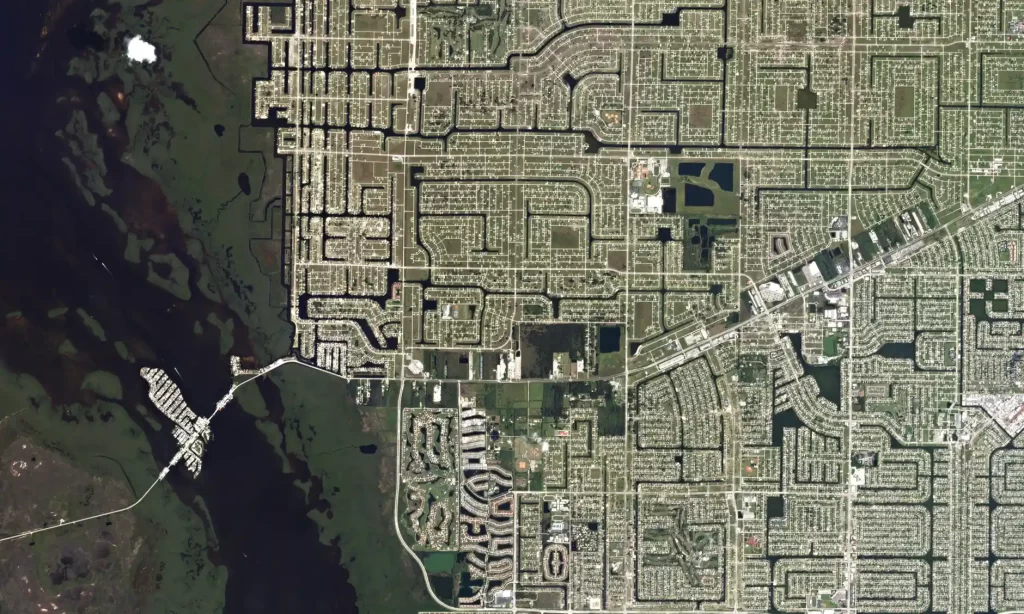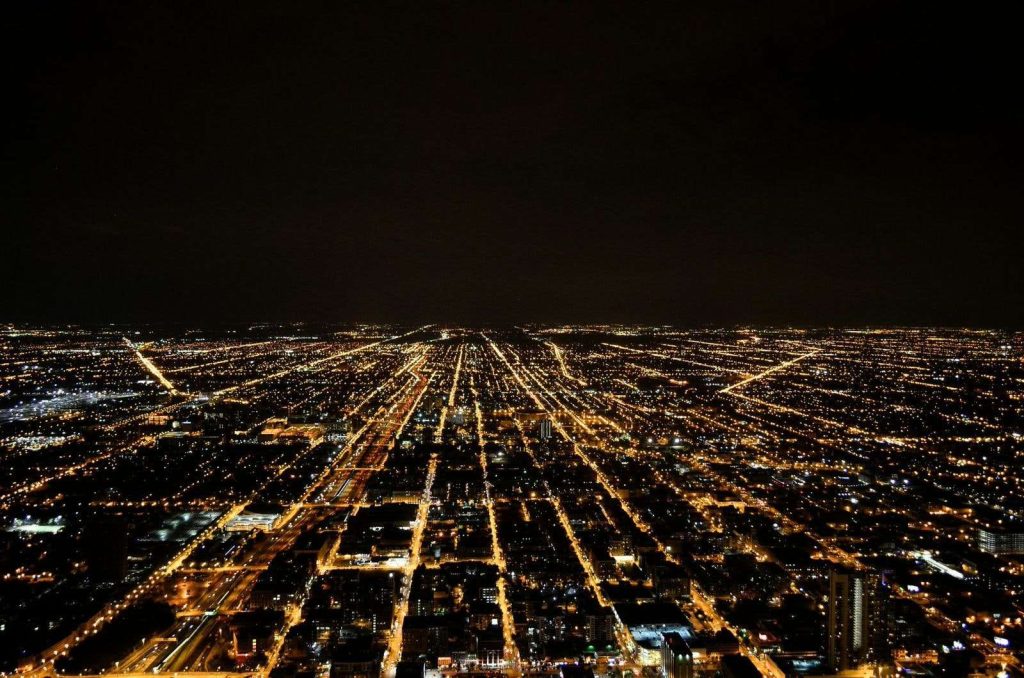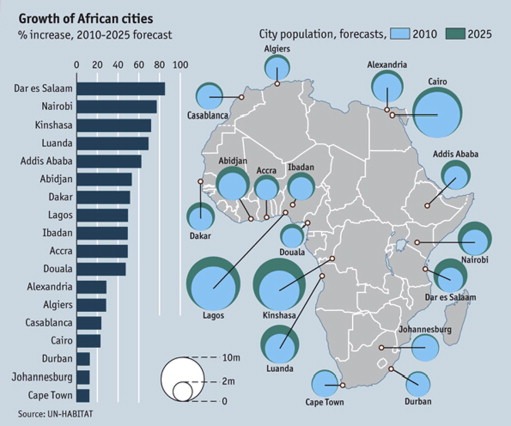Rapid urbanization creates many problems. It is both the cause of many disasters and a hindrance to recovery for many communities, especially in developing countries. The UN population fund predicts that, by 2050, 86% of the population in developed nations will live in urban areas. That figure is closer to 64% in developing nations.
Disadvantaged groups are also by far the most vulnerable to the consequences of disasters that occur in urban areas.
However, these risks can be considerably reduced if urbanization and increasing population density are properly managed (Choi, 2010). Moreover, planned urbanization, with proper land use regulations, can be useful in making an adaptation policy to climate change.
This article will address the increased vulnerability to disaster in sprawling cities. We also look at the solutions and recommendations helping to solve this problem.
sprawling cities
Today, many countries face the problems of urban sprawl, rapid urbanization, and an increase in the number of cities (Rezaei, 2018; Choi, 2010; ). Further, some of those countries are prone to natural disaster. Iran, for example, is located on an earthquake belt.
Disasters in countries like these create heavy casualties (Rezaei, 2018). In addition, sprawling cities are more likely to be impacted by floods. Sprawl leads to multiple suburbs that are connected to each other by transport lanes (Choi, 2010). Thus, the larger area is vastly more vulnerable to disruption.

The Five characteristics of sprawling cities
- High numbers of low-density, single-family dwellings on large lots. These kinds of residential housing developments consume large amounts of previously vacant or productive land.
- High dependency on owning a car, even for short trips. This is because sprawling development creates large distances. As a result, even a trip to the grocery store feels time consuming.
- Development that is rapidly expanding away from compact urban cores.
- A ‘leapfrogging’ pattern caused by disorganized development that consumes large amounts of land.
- ‘Ribbon’ development, where residences or commercial properties extend in lines outward from urban centers. Homes built along rural highways, for example, create traffic safety dangers (Brody, 2013).
Problems with rapid urbanization: is it increasing disaster risk?
The majority of disasters recently receiving media attention have not been natural disasters. Instead, they have been epidemics that have spread rapidly in urban areas. Around 95% of COVID-19 cases began from urban areas, according to the UN Office for Disaster Risk Reduction (UNDRR). Densely populated urban areas are ‘hotspots’ prone to disease. Poor waste management and sanitation are principal causes.
Also, poorly planned urban development harms the environment and creates new disaster risks (UNDRR, 2013). Inequality adds to this risk as poorer communities are much more vulnerable than the rich. According to the UNDRR, over 800 million people live in informal settlements where occupants have no legal claim to housing. These become hotspots for hazards (UNDRR, 2013).
Natural Disaster Risks
The assessment of natural disaster risk has three dimensions:
- Firstly, there is hazard, which usually refers to earthquakes and hurricanes.
- Secondly, exposure, which refers to a population’s layout and their economic ability to recover from a natural disaster.
- Thirdly, there is vulnerability, which refers to the ‘susceptibility of exposed elements‘ to a natural hazard.
Through rigorous urban planning it is possible to create sustainable communities and cities. Such cities prioritise robust sanitation and healthcare services, on reducing inequality, and an investment in renewables.
In addition, greater urbanization usually follows economic growth. So, making sure there is adequate investment, by using some of that growth for disaster risk reduction, is important. If, for example, communities are located in hazardous zones, like tsunami-prone coastlines, investment provides the necessary resilience, as well the technology, for reducing their exposure to disasters.
Otherwise, rapid economic and population growth can lead to some areas becoming more exposed. Larger communities are likely to be more vulnerable to threats where there is not a corresponding investment in disaster risk reduction. (UNDRR, 2013).

Problems with Rapid urbanisation in Africa and Asia
Worldwide, approximately 1.4 million people move into cities each week. Interestingly, up to 90% of this migration happens in Africa and Asia (Seduski, 2016). Rapid urbanization causes both population increases and ecological damage. During the past decade, especially in Southeast Asia, problems with rapid urbanization has led to cities becoming more vulnerable. In Korea, for example, where cities are sprawling into naturally forested areas, there has been greater risk of urban disaster, ecological damage, human casualty, and loss of property (Choi, 2010).
Korea

Since the 1970’s, Korea has experienced problems with rapid urbanization, such as high population growth and environmental change. Environmental destruction, in particular, has made cities more vulnerable to natural disaster. Large areas of forest have been cut down. By 2007, over 90% of the Korean population had moved to sprawling urban areas, leading to further deforestation and vulnerability. (Choi, 2010).
Floods in Gurye, South Korea, Aug. 8, 2020. (Chun Jung-in/Yonhap via AP)
Africa

In 2014, Africa had only three ‘megacities’: Cairo, Kinshasa and Lagos. By 2030, the cities of Dar es Salaam, Johannesburg, and Luanda are expected to surpass 10 million in population. Large cities (5-10 million) will become more common on the continent. However, there are still many countries in with large rural populations. For example, Nigeria, Ethiopia, and Uganda (Department of Economic and Social Affairs, 2014). Climate change will affect rural areas much more harshly than the cities which receive more economic support.
Source: UN-Habitat
Opportunities for building resilience
The main features of urban development for sustainable cities are pre-project design, pre-construction, and post-completion (UNDRR, 2013). These create a framework that provide opportunities to reduce the disaster risks from urbanisation. Thus, by integrating effective risk governance into city regulations and planning, the threat of disaster is reduced.
Urban living creates social, cultural, and political opportunities which go hand in hand with higher levels of education and improved living standards (Department of Economic and Social Affairs, 2014). High quality urban development is an investment in the future for children growing up in these areas.
By incorporating resilience within our infrastructure and societies, we diminish the cost of reparations from natural disaster and recover from them more easily. That means improving the resilience of poorer communities and reducing their exposure to climate-related disasters.
Disaster mitigation requires a multi-sector methodology that is people-oriented. This is because the hazards are manifold and interrelated. The principles of deterrence and resilience must be invoked, and these applied through all societal sectors. That includes the financial structure, risk-sharing and social safety device mechanisms (Hishan et al., 2021).
Further, opportunities to achieve synergies between actions that strengthen resilience may also assist towards disaster risk reduction.
Conclusion
Rapid urbanization has led to sprawling cities, which are vulnerable to natural disasters. This is especially the case where flooding, bushfires and earthquakes are common. With proper urban planning and development which includes all sectors of the population, it is possible to create sustainable and ‘thrivable‘ cities.
These kinds of cities require less reparations from natural disasters. They can also recover more easily from damage and very likely save lives. Whilst the large waves of people moving into cities make it is difficult to maintain proper development, it is important that we are as prepared as possible for the threats facing those communities.
A THRIVABLE Framework
At its core, sustainability simply means the ability to continue, to survive. ‘Thrivability‘, by contrast, is the next step, beyond sustainability. THRIVE believes that humanity can do much more than that with the knowledge available to us. We want to instill the idea that sustainable solutions not only prevent disaster, but offer the potential for a society that is flourishing.
The THRIVE Framework examines issues and evaluates potential solutions in relation to this overarching goal of thrivability. It is about making predictive analyses using modern technology that support environmental and social sustainability transformations.
We recognise that human happiness can sometimes compete with environmental wellbeing, which is why we use our ciambella chart (below) to illustrate the ‘thrivable zone’. This is the area between a ‘social floor’ (the minimum required for people to live happy lives) and an ‘environmental ceiling’ (the maximum damage that we can do to the environment before it becomes unsustainable).
Overlaid on these thrivable zones are visual measurements that show impact – whether something is inside the thrivable zone – or exactly where it falls short.

performing this evaluation. There are 12 Foundational Focus Factors, divided into four areas.
To learn more about how The THRIVE Project is researching, educating and advocating for a future beyond sustainability, visit our website. You can follow our informative blog and podcast series, as well as find out about our regular live webinars featuring expert guests in the field. Sign up to our newsletter for regular updates.























